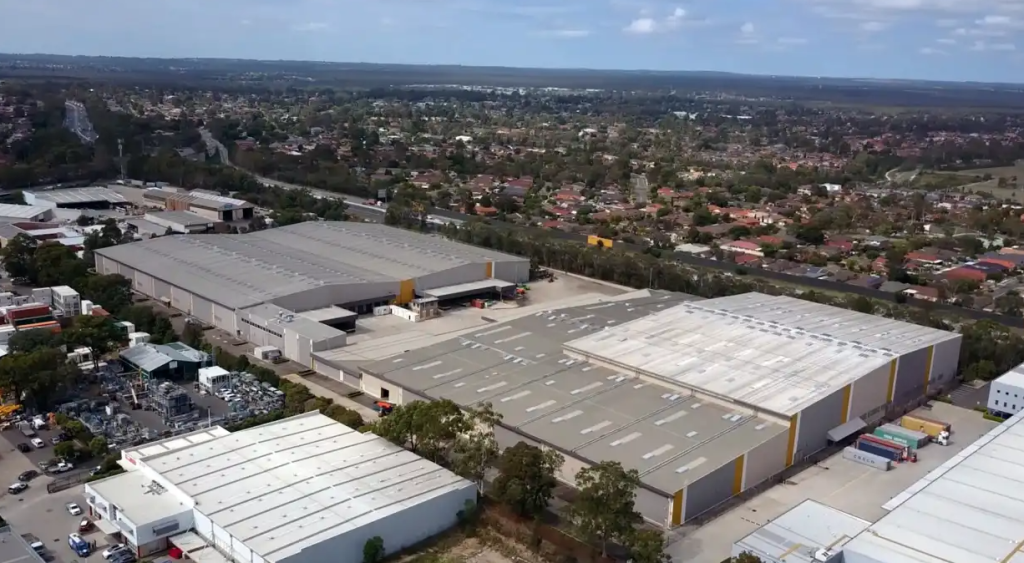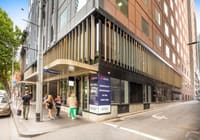
E-commerce boom has property bankers eyeing warehouses
Data centres, hospitals and build-to-rent apartment blocks are the beacons of hope for institutional investors in real estate in 2021 after the sector’s traditional trophy assets – major malls and big city offices – lost some of their lustre through the disruption of last year.
And once considered the most mundane of commercial property investments, the humble warehouse is now at the heart of institutional investment interest thanks to the online shopping surge, which has propelled demand for logistics space.
In an exclusive roundtable, convened by The Australian Financial Review, a group of the country’s top real estate investment bankers have taken stock of the disruption and plotted their strategy through the coming year.
“From a business and markets perspective the impact of COVID-19 was brutal and swift,” said Tim Church, a veteran banker who left UBS last year to take over as chairman of Morgan Stanley’s local investment banking business.
“It has caused a significant and swift recalibration of real estate asset classes: the winner being industrial and logistics as the most preferred mainstream asset class for the foreseeable future.”
And, despite initial alarm as the country shut down, another “surprise winner” in the big real estate reshuffle was the residential real estate market, according to Mr Church. “It has been one of the biggest beneficiaries of the synchronised support from governments, regulators and business,” he said.
Underscoring the appetite for industrial assets, what may well become one of the year’s largest floats is already taking shape on the desks of bankers at Morgan Stanley and JPMorgan.
Their property banking teams have a mandate from Blackstone to sell or list a multibillion-dollar portfolio of Australian warehouses and industrial assets.
The portfolio comprises more than 1 million square metres of space and more than 100 tenants. Under the dual-track process, the bankers are working on the merits of a $1 billion-odd initial public offering or multibillion-dollar sale.
It’s sweet timing for the US private equity giant, as industrial and logistics shrugs off its previously staid reputation to become one of the best performing areas of real estate sector in the past year, through the demand generated from the growth in e-commerce of food, clothing and pharmaceuticals suppliers.
“Separately, there is no doubt that there will be an increased focus on exposure to alternative assets in Australia, which are very under-represented when you compare us against other markets like the US,” said Rahul Bharara, Credit Suisse’s head of real estate in the Asia-Pacific.
His peers agree. Once regarded as specialised, assets such as data centres (a sector that was also boosted by the surge in online activity during the shutdown), healthcare real estate and build-to-rent developments are attracting increasing amounts of institutional investment.
Listed developer Mirvac was an early mover in build-to-rent with its project at Sydney’s Olympic Park.
But the sector is gaining rapid momentum. On the same day last month, the Financial Review reported Rich Lister Tim Gurner’s ambition to create a $1 billion BTR development fund and Canada’s Oxford Properties plan for a $450 million Melbourne development.
JPMorgan’s executive director of real estate investment banking, Valli Arunachalam, reckons there is a large amount of capital ready to be deployed into real estate.
“However, at this point that capital is not chasing large shopping centres, and to a lesser extent office towers, which both have more near-term leasing risk.
“This means that capital is being concentrated on a range of new alternative sectors. The pandemic proved that a number of the alternatives were highly resilient against shocks to the economy.”
Another big trend likely to define the sector in the coming year is the sale and leaseback of large real estate portfolios.
For institutional investors such assets can deliver long-term, predictable and stable incomes, a particularly attractive proposition in a low-rate environment, according to Ben Connolly, Citi’s managing director and head of real estate for Australia & New Zealand.
“The uniqueness of the sale and leaseback product is that it is relevant for all industries and market participants, whether that be listed or unlisted corporates or government agencies,” he said.
“We expect all institutions that have real estate sitting on their balance sheet to assess capital management strategies over the coming years, of which sale and leaseback will be a viable and compelling option.”











